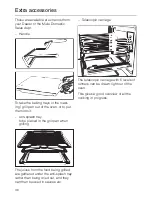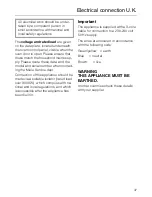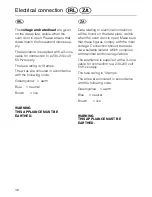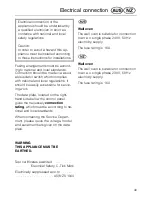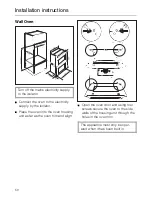
Cleaning and care
b
“Clean-Enamel”
This is a specially hardened enamel
with an extremely smooth surface.
Most baking and roasting residues can
be easily removed using a sponge
cloth, washing up liquid and hot water.
If something bakes on harder, it can be
loosened with a shielded razor blade
scraper. It is easier to remove splashes
of fruit or cake mixture from the oven
and racks while they are still warm.
Fruit juice may cause lasting discolour-
ation.
Dull patches may remain permanently
in the oven tray after roasting or grilling.
If an oven spray is used on the
“Clean-Enamel”, follow the manufac-
turer’s instructions carefully.
Important: Oven spray must not
come into contact with catalytic ena-
mel. It can damage the enamel.
c
Catalytic Enamel
Because circulating air in the oven de-
posits oil and fat splashes predomi-
nantly on the
rear wall
of the oven, this
is coated in catalytic enamel.
With some models, side panels with
catalytic coating are also fitted, and the
removable guard plate above the grill
has a catalytic coating.
When this catalytic enamel is heated to
temperatures above 200°C, oil and
grease deposits are removed, except
for deposits of spices and syrups. The
higher the temperature the more effec-
tive the process.
To take further advantage of the cata-
lytic properties for cleaning, the “Extra
cleaning process” can be used, (see
that section below). For slight soils the
oven can be cleaned manually.
Do not wait too long between cleaning
sessions as further baking and roasting
will cause oil and grease deposits to
burn on even harder.
36
Summary of Contents for H 213 B2
Page 4: ...Description of the appliance H 213 B2 4 ...
Page 51: ...51 ...

























